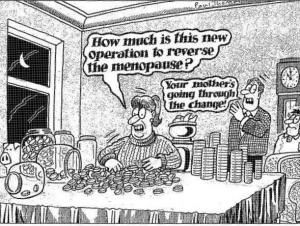Occupy…Give to the Max
We interrupt our regularly scheduled program…
“All I know is that first you’ve got to get mad. You’ve got to say, ‘I’m a HUMAN BEING, God damn it! My life has VALUE!’ So I want you to get up now. I want all of you to get up out of your chairs. I want you to get up right now and go to the window. Open it, and stick your head out, and yell, ‘I’M AS MAD AS HELL, AND I’M NOT GOING TO TAKE THIS ANYMORE!'”
Do you recall this famous monologue from the 1976 film, Network? In it, Actor Peter Finch, playing a news anchor about to lose his job, takes the airways and actually spikes the ratings responsible for the pending demise of his job.
This scene reminds of the ‘Occupy’ movement that has taken hold of our country to protest social and economic inequity, corporate greed and corruption in government. However, one of the paradigms operating in our culture is that many of the very organizations formed to help individuals in need and lend assistance to people who have lost their jobs or their homes or their livelihoods are in higher demand than ever. And yet, their coffers are emptying quicker than they can be filled.
That’s why I’m calling for an ‘Occupy’ to reverse the backlash that has turned it into a four-letter word and reframe it positively.
The path? Give to the Max.
Back in early October, I wrote about Give to the Max Day, a one-day regional online fundraiser to support local nonprofit programs in D.C., Maryland and Virginia. Developed and supported by an ‘Eight Neighbors Group’ alliance of the area’s leading nonprofit and civic organizations (Center for Nonprofit Advancement, Greater Washington Board of Trade, Leadership Greater Washington, Metropolitan Washington Council of Governments, Nonprofit Roundtable of Greater Washington and the Washington Regional Association of Grantmakers) who have joined forces with the online fundraiser Razoo, The Community Foundation for the National Capital Region and the United Way of the National Capital Area, Give to the Max aims to help local organizations fill their coffers through social giving. And this effort, while certainly focusing on the immediate area in which I reside, is truly an offshoot of Occupy in the sense that it provides an example of how individuals can take back their power and and heal communities that are suffering because of economically-driven cutbacks. Even better? This isn’t a ‘one size fits all’ event that focuses on a single type of assistance; in fact, more than 100 nonprofits have joined the movement thus far, proving that giving doesn’t have to be strangled but can be as small and large as one can afford, and focused on causes that individuals are most passionate about.
In the United States, the Occupy movement started in the Wall Street area, the quintessential birthplace of capitalism and greed. It has since spread like wildfire, with events held in Boston, D.C., Oakland, L.A., Pittsburgh and St. Augustine. This coming Wednesday, November 9, we have an opportunity to leverage Give to the Max, focus attention away from greed to toward charitable giving and occupy the interwebz without even leaving the comfort of desks. Truly, shouldn’t we be asking ourselves if we’re mad as hell at cutbacks that many of these organizations (or organizations in your region) have been forced to make to stay afloat? On November 9, why not boot up the computer and make your voice (and donation) count?
Occupy Give to the Max? Sure, why not? Occupy does not have to bet a four-letter word and neither should giving. And it starts with you. And me. And we.
Let’s occupy the Interwebz and Give to the Max on November 9. I hear that it spreads…like wildfire.
p.s. Pass it on…
Read MoreEstrogen and urinary incontinence: is there a link?
One of the most common and (and yet unspoken about) conditions in women is urinary incontinence (UI) or problems with bladder control. Defined as the involuntary loss of urine – either due to a weakening of the pelvic floor muscles and in association with pressure on the bladder (stress urinary incontinence) or due to unknown causes and associated with an uncontrollable urge to pass urine, frequency and nighttime awakening (urge urinary incontinence or overactive bladder) – urinary incontinence is most definitely associated with aging. In fact, roughly 15 million women in the U.S. have stress urinary incontinence and about 20 million, overactive bladder.
There are a multitudes of risk factors for urinary incontinence and they range from weight, vaginal deliveries and pelvic surgery to alcohol use and of course, as mentioned, growing older. However, why is menopausal status also a risk factor?
One word: estrogen.
Indeed, results from the infamous Women’s Health Initiative study demonstrated that women who were randomized to combination hormone therapy or estrogen only were at increased risk for worsening urinary incontinence symptoms or for developing urinary incontinence after only one year of use. However, like other data from this study, questions have been raised with regard to the findings, namely that they are not applicable to the general population. And yet, it is critical to learn if using hormone therapy increases urinary incontinence risk; these conditions significantly affect quality of life and at their severest, limit physical and social activities, limit intimacy and other relationships, limit work productivity and affect overall wellbeing.
Rather than generalize, however, it’s important to take a close look at ethnically diverse populations of women in the community and tease out if there are any specific factors related to estrogen use that increase incontinence risk. That is exactly what a group of researchers did recently, when they examined a group of 167 women in menopause who had been surveyed in 1993, found to have no urinary incontinence and then reinterviewed eleven years later in 2004. In this study, which was published in Menopause journal,the researchers specifically evaluated if the women had used estrogen and if so, for how long (i.e. less than five years or more than five years). The findings? Although none of the women reported having urinary incontinence issues at the first interview, just over a decade later, 28% reported that they had developed urinary incontinence and almost 19%, that they developed urinary incontinence that resulted impacted their ability to function (e.g. avoiding social gatherings, not visiting friends or going to church, or avoiding traveling, shopping or physical activities). What’s more, of the women surveyed who reported that they had used estrogen for more than five years, 15% developed new cases of urinary incontinence with an associated loss of function.
According a related piece in Reuters, the study’s lead investigator says that they didn’t take into account how much estrogen the women were using or if they used it in conjunction with progesterone, so there are weaknesses in the study. Still, it does appear that taking estrogen for more than five years may significantly increase the risk for bladder control issues. The next piece of the puzzle is discovering why it affects bladder function in the first place.
Bladder control issues are serious business. Yet another reason to speak to your doctor before moving forward on hormone therapy. Your move – worth the risk?
Read MoreWednesday Bubble: the truth and nothing but…
The truth? Time has gotten the best of me this week. Or at least work has. So I’m doing Wednesday with a smile and hope you will too.
Friday is back to business as usual. Promise.
Meanwhile, got change? I’m saving up for an operation…
[Credit: Paul Thomas, Uncaptioned. Daily Express, 24 September 1999; The British Cartoon Archive, University of Kent, catalogue record 52191. http://www.kent.ac.uk/cartoons]
Read More









